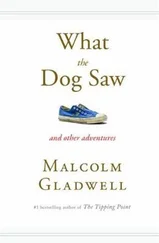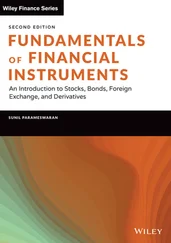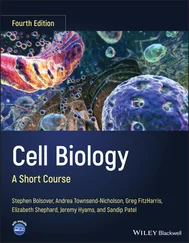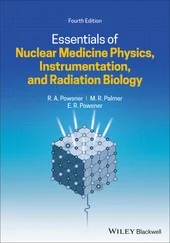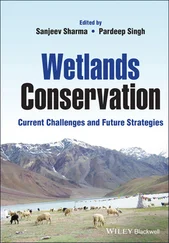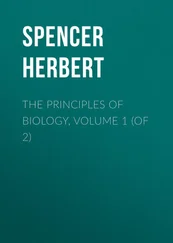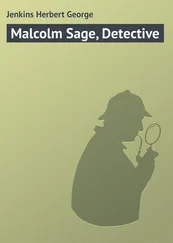1 Cover
2 Dedication Page For Aram J.K. Calhoun, who inspires us with her delight in the natural world and dedication to conservation. For Kathleen E. (Cassie) and Harold C. Gibbs, who inspired many to know and care for life on Earth. For Tavi B. Popescu, whose wonder about the natural world gives us optimism about the next generation of the Earth’s stewards.
3 Title Page
4 Copyright Page
5 List of Case Studies
6 Preface
7 Acknowledgments
8 About the Companion Website
9 PART I: Biodiversity and Its Importance CHAPTER 1: Conservation and Conservation BiologyWhat Is Conservation? A Brief History of Conservation An Overview of Conservation Ethics What Is Conservation Biology? A Brief History of Conservation Biology Summary FURTHER READING TOPICS FOR DISCUSSION CHAPTER 2: What Is Biodiversity? Species, Genes, and Ecosystems Structure and Function Measuring Biodiversity The Mismeasure of Biodiversity Biodiversity and Spatial Scales Biodiversity Verbs The Related Concepts of “Integrity” and “Sustainability” Summary FURTHER READING TOPICS FOR DISCUSSION CHAPTER 3: Species Diversity What Is a Species? How Many Species Are There? The Intrinsic Value of Species and Their Conservation Status The Instrumental Values of Species The Uniqueness Value of Species Summary FURTHER READING TOPICS FOR DISCUSSION CHAPTER 4: Ecosystem Diversity What Is an Ecosystem? The Values of Ecosystems Ecosystem Diversity and Species Diversity Ecosystems and Landscapes Summary FURTHER READING TOPICS FOR DISCUSSION CHAPTER 5: Genetic Diversity What Is Genetic Diversity? The Importance of Genetic Diversity Processes That Diminish Genetic Diversity Cultural Diversity Summary FURTHER READING TOPICS FOR DISCUSSION
10 PART II: Threats to Biodiversity CHAPTER 6: Mass Extinctions and Global Change Extinction Episodes of the Past Estimating the Current Rate of Extinction The Recent History of Global Climate Change How Did We Get to this Point? What Is the Way Ahead? Summary FURTHER READING TOPICS FOR DISCUSSION CHAPTER 7: Extinction Processes Why Are Some Species More Vulnerable to Extinction than Others? Populations Population Viability Analysis Summary FURTHER READING TOPICS FOR DISCUSSION CHAPTER 8: Ecosystem Degradation and Loss Contamination Roads, Dams, and Other Structures Earth, Fire, Water Deforestation Desertification Draining, Dredging, Damming, Etc. Fragmentation Summary FURTHER READING TOPICS FOR DISCUSSION CHAPTER 9: Overexploitation The Long History of Overexploitation Types of Exploitation Consequences of Overexploitation Some Final Perspectives on Exploitation Summary FURTHER READING TOPICS FOR DISCUSSION CHAPTER 10: Invasive Exotics How Do Species Move? Impacts of Invasive Exotics Success Rates Irony Summary FURTHER READING TOPICS FOR DISCUSSION
11 PART III: Maintaining Biodiversity CHAPTER 11: Protecting Ecosystems Reserve Selection Reserve Design Reserve Management Summary FURTHER READING TOPICS FOR DISCUSSION CHAPTER 12: Sustaining Ecosystems Forestry Livestock Grazing Fisheries Ecological Management Restoring Ecosystems Summary FURTHER READING TOPICS FOR DISCUSSION CHAPTER 13: Managing Populations Providing Resources Controlling Threats Direct Manipulations Epilogue Summary FURTHER READING TOPICS FOR DISCUSSION CHAPTER 14: Conservation near People Cultivated Ecosystems Built Ecosystems Zoos and Gardens The Ex Situ–In Situ Interface Conservation of Domesticated Species Summary FURTHER READING TOPICS FOR DISCUSSION
12 PART IV: The Human Factors CHAPTER 15: Social Factors Values Differ Describing Values Values Change Summary FURTHER READING TOPICS FOR DISCUSSION CHAPTER 16: Economics The Benefits The Costs The Distribution of Benefits and Costs Problems and Solutions Summary FURTHER READING TOPICS FOR DISCUSSION CHAPTER 17: Politics and Action Setting Priorities for Action Rights and Responsibilities International Agencies Governments Nongovernmental Organizations Corporations Communities Individuals Summary FURTHER READING TOPICS FOR DISCUSSION
13 Epilogue
14 Glossary
15 Literature Cited
16 Species Index
17 Subject Index
18 End User License Agreement
1 Chapter 2 Table 2.1 Hypothetical lists of species for three ecosystems. Table 2.2 Abundance of species (number/hectare) in three ecosystems and measu...
2 Chapter 4 Table 4.1 Relative abundance of species (percentages) in three hypothetical e... Table 4.2 This example depicts how one type of forest nests within the levels... Table 4.3 A few governments have begun the process of protecting endangered t...
3 Chapter 5 Table 5.1 Distribution of two alleles, MDH‐1 xand MDH‐1 y, among five biso... Table 5.2 Proportion of genetic variation remaining after a genetic bottlenec... Table 5.3 The proportion of genetic variation retained in small populations o... Table 5.4 Expected number of alleles remaining after t generations for a popul...
4 Chapter 6Table 6.1 Numbers of plant and animal species by major taxon listed by the IU...Table 6.2 The ability of organisms to shift their geographic ranges depends o...
5 Chapter 9Table 9.1 Estimate of wild life trade values (for 2005) globally and within t...
6 Chapter 11Table 11.1 The United Nations recognizes seven basic categories of protected ...Table 11.2 A hypothetical series of five progressively larger reserves.
7 Chapter 15Table 15.1 Stephen Kellert has described several types of attitudes that peop...
8 Chapter 16Table 16.1 A biotic invoice, that is, estimated annual economic benefits of b...Table 16.2 Willingness of visitors to pay increased entry fees to access the ...
1 Chapter 1 Figure 1.1 The roots of conservation can probably be found among the earlies... Figure 1.2 Mount Fuji [ top ] has been a sacred mountain for the Buddhists and... Figure 1.3 Put yourself in the shoes of John Muir, Gifford Pinchot, and Aldo... Figure 1.4 A schematic view of the relationship between conservation biology... Figure 1.5 The Society for Conservation Biology began publishing Conservatio ... Figure 1.6 This Española tortoise was among the very first repatriated to th...
2 Chapter 2 Figure 2.1 There are few places where biodiversity is as conspicuous as a co... Figure 2.2 Conservationists do not consider all species to merit equal atten... Figure 2.3 The distribution of four hypothetical lizard species showing alph... Figure 2.4 Clear Lake in northern California used to be inhabited by 14 nati... Figure 2.5 What is the state of this Pacific kelp forest? From a biodiversit...
3 Chapter 3 Figure 3.1 Over 1.8 million species have been described by scientists, and i... Figure 3.2 The depth of unexplored biodiversity is greatest among small spec... Figure 3.3 These caterpillars represent ten sibling species of what was long... Figure 3.4 A species' intrinsic value is independent of its relationship wit... Figure 3.5 Although most of our food comes from domestic species, a wide var... Figure 3.6 Silphion was a plant of such great commercial value that it was d... Figure 3.7 Natural building materials remain very important, especially in r... Figure 3.8 People enjoy the diversity of nature in many ways. Some seek part... Figure 3.9 Other organisms teach us about our world. Here biologists attach ... Figure 3.10 ( Left ) This person climbed up and down almost 10 m of glass, at ... Figure 3.11 The ecological impacts of keystone species take many forms. The ... Figure 3.12 With a geographic range reaching from the Russian Far East south... Figure 3.13 Which is more important to conserve, the aardvark or the jerboa?... Figure 3.14 The neem tree provides an extraordinary array of useful products...
Читать дальше

